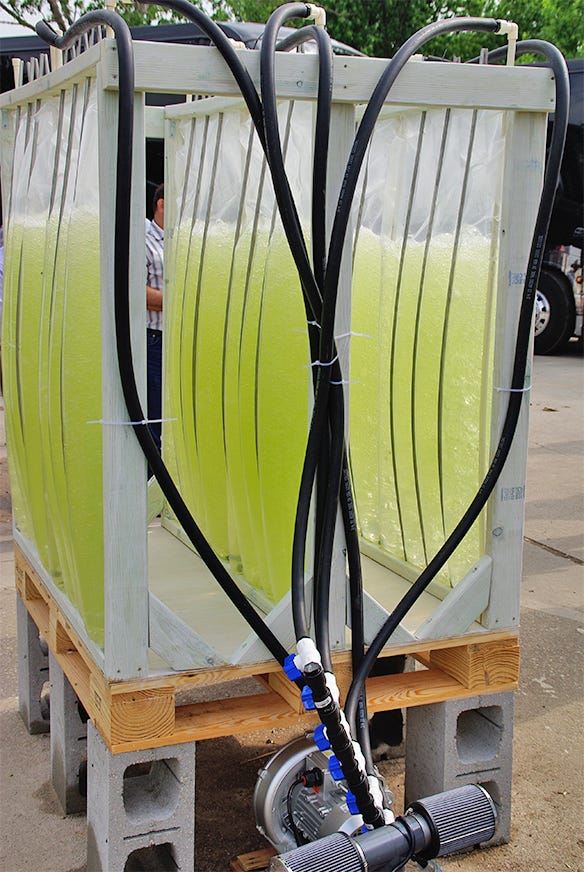September 20, 2017

By Liz Morrison
Food from “moo poo?”
Yup! Robert Gardner, a scientist at the University of Minnesota West Central Research and Outreach Center in Morris, Minn., is using manure lagoon wastewater to grow algae for livestock feed.
“The goal is to capture nutrients in wastewater and recycle them by cultivating algae that grow well in dairy wastewater and are good for cows to eat,” said Gardner, who spoke at the 2017 Midwest Energy Conference in Morris last summer.

WEEKLY CROP: South-facing bioreactors filled with nutrient-rich dairy wastewater are growing microalgae for livestock feed at the WCROC in Morris, Minn. The prototype bioreactors consist of clear, recyclable plastic bags filled with wastewater and seeded with strains of algae that grow naturally in the wastewater lagoon. Air, along with atmospheric carbon dioxide, is also pumped into the reactors, which produce a new crop of algae every seven days.

Algae grow almost everywhere
Algae — among the most robust and numerous organisms on Earth — grow nearly everywhere, from the frozen tundra to scalding hot springs. These diverse life forms need only sunlight, water, carbon dioxide and a few inorganic nutrients. They show great promise as sustainable sources of livestock feed and oils for fuel, bioplastics and other bioproducts, Gardner said.
Many strains of microalgae are already growing naturally in the WCROC dairy manure basin, as they do in all waste lagoons. Gardner’s team isolated and identified the most promising types for cultivation and feed. These strains are now being raised in inexpensive flat-panel reactors outside the WCROC milking barn.
The prototype reactors consist of clear, recyclable, 22-gallon plastic bags hanging on south-facing frames. The bags are filled with the liquid portion of dairy cow waste, which is rich in nitrogen, phosphorus and other nutrients, Gardner said. Manure solids are not used. Air, along with atmospheric carbon dioxide, is also pumped into the reactors.
Harvest is rapid
It takes about a week for the reactors to fill with fast-growing microalgae. The green stuff is then separated in a centrifuge, and the reactors refilled with wastewater and reseeded with more algae. Each reactor bag is good for two or three growth cycles. The reactors don’t freeze, so production with a cold-weather strain of algae could continue year-round, Gardner said.
The harvested algae are freeze-dried. Livestock feeding trials are in the works to evaluate these algae as a feed ingredient. Algae are high in both protein and oil, two key feed components.
Current algae yields are about 5 grams per liter of wastewater, Gardner said. “Now, we��’re working to scale up the technology.”
Morrison writes from Morris, Minn.
You May Also Like




